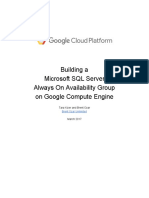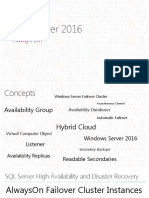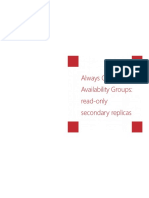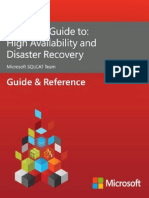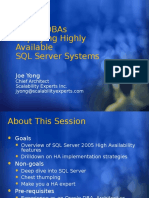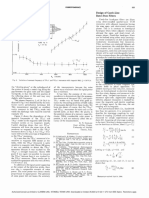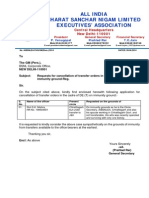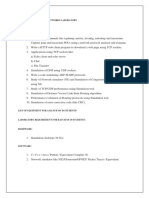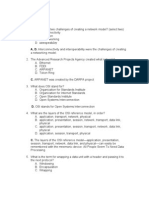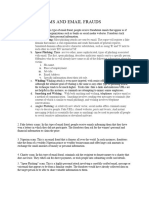0% found this document useful (0 votes)
45 views4 pagesMultiple Subnet AG Groups in SQL Server-Overview
Multi-subnet Always On Availability Groups in SQL Server offer high availability and disaster recovery for geographically dispersed applications. Proper configuration of network, DNS, and quorum settings is essential for smooth failovers and reliable connections to active replicas. Key considerations include managing network latency, DNS resolution, and failover mechanisms to ensure optimal performance and reliability.
Uploaded by
vkyvishal1721Copyright
© © All Rights Reserved
We take content rights seriously. If you suspect this is your content, claim it here.
Available Formats
Download as PDF, TXT or read online on Scribd
0% found this document useful (0 votes)
45 views4 pagesMultiple Subnet AG Groups in SQL Server-Overview
Multi-subnet Always On Availability Groups in SQL Server offer high availability and disaster recovery for geographically dispersed applications. Proper configuration of network, DNS, and quorum settings is essential for smooth failovers and reliable connections to active replicas. Key considerations include managing network latency, DNS resolution, and failover mechanisms to ensure optimal performance and reliability.
Uploaded by
vkyvishal1721Copyright
© © All Rights Reserved
We take content rights seriously. If you suspect this is your content, claim it here.
Available Formats
Download as PDF, TXT or read online on Scribd
/ 4











